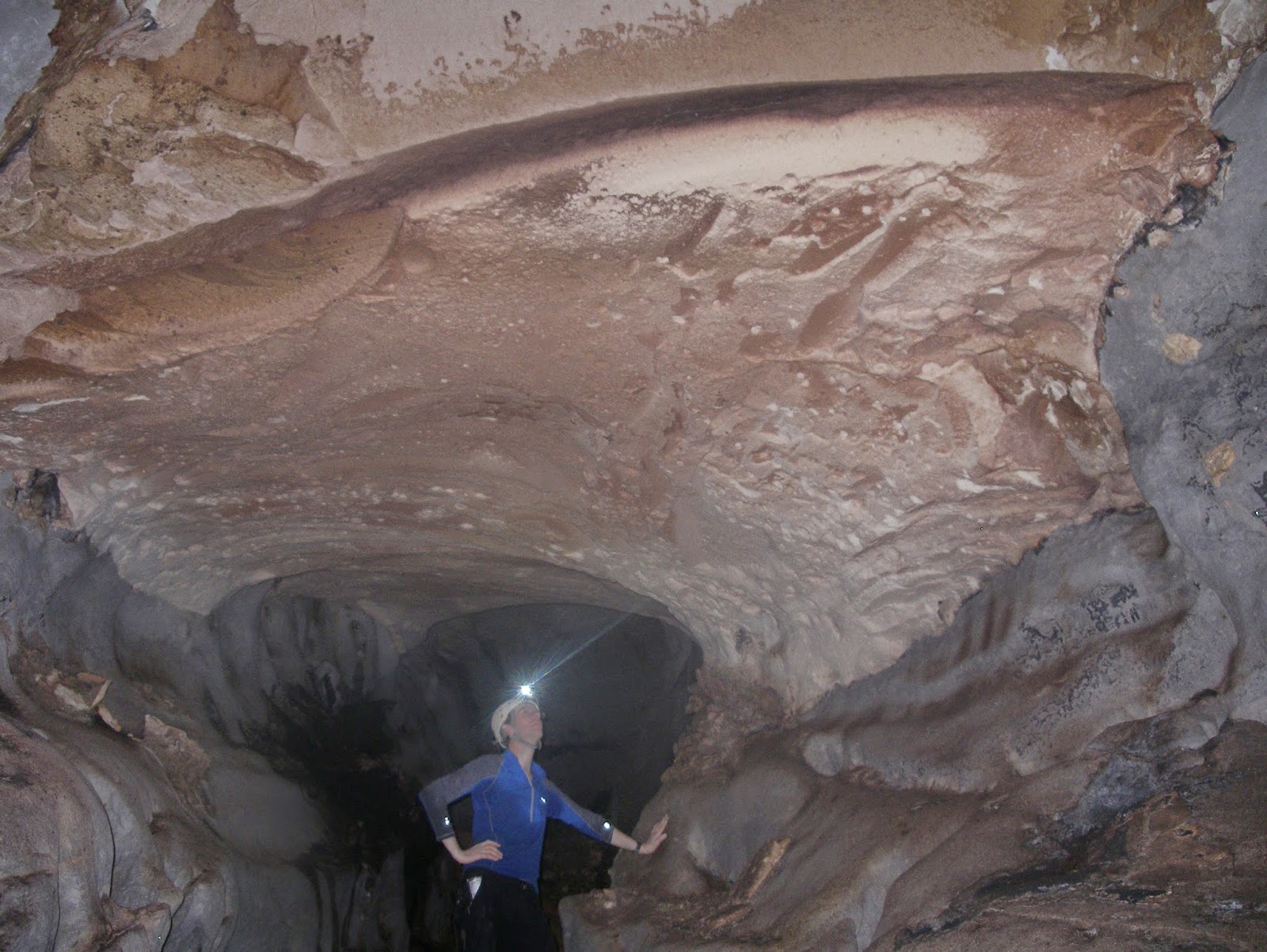 |
| Looking up into the roof of Deer Cave, home to 3 million bats |
It is dark when I wake up. Pitch dark. Above I can hear hundreds of swiftlets chattering in the dark, finding their way through this, one of the biggest cave systems in the world. Turning my light on, tell-tale glints of light down the passage mark the location of Huntsman spiders lying in wait for an unsuspecting cave-cricket, their eyes reflecting my light. Rising above is the huge void of Hyperspace, a massive chamber over 100 m across lying hidden beneath the tropical rainforests of the Gunung Mulu National Park in Sarawak. Today, we are heading out to daylight after a 3 day camp in Clearwater Cave. At around 200 km long, it is one of the top ten longest caves in the World.
 |
| Returning to daylight. At the entrance after 3
days underground. L-R: Carl Clark, Tony Radmell, Professor Peter Smart, Dr Andy Farrant (photo Fran White) |
It has been 23 years since I last trod this spot, when I was a young postgraduate student at the University of Bristol, and today my former PhD supervisor (Professor Peter Smart) is in our team. Yesterday we had pushed a passage which led into 1.6 km of new cave, eventually emerging at a fine entrance high above the Melinau Paku valley, surveying as we went. Ancient gravels, long abandoned by the formative stream and now perched 300 m above the Clearwater River littered the passage floor, sometimes capped by stalagmites. The gravel composition, imbrication and cross bedding combined with dissolutional flow markings on the passage walls yield clues to the direction of water flow and the discharge of this ancient river. It is these stalagmites and sediments that provide the key to the age of these caves.
 |
| Weathered remnants of volcanic ash deposits;
here they once filled this passage, but have been subsequently washed out, leaving remnants on the cave roof |
 |
| Looking out of the Secret Garden entrance to Deer Cave; the immense size of the passage (nowhere less than 100m high) can be gleaned by the rainforest trees in the entrance |
Back at the base camp at the National Park HQ, other members of the expedition return with tales of yet more kilometres of huge passage discovered; all providing additional clues about the tectonic, climatic and landscape evolution of this part of Southeast Asia.
Thanks to Andy Eavis and members of the Mulu Caves 2014 expedition, to the Gunung Mulu National Park and the Sarawak Forest Department.
More details can be found at http://www.mulucaves.org/
Andy Farrant
 |
| The guano from 3 million bats hosts a diverse ecosystem within Deer Cave, including cockroaches, spiders, centipedes, crabs and cave crickets |

Comments